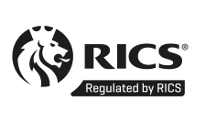Our Client, was in negotiations to take the lease of a retail unit in Dorking High Street. The retail unit formed the ground floor of a period property. Due to the age of the building, and the fact there was wear and tear visible from the previous occupier, our Client was concerned about their potential lease obligations.
The building was formerly understood to be a Public House and had been converted, forming the shop to the ground floor and separate accommodation to the first floor. Our Client was looking to take the ground floor retail area and ancillary space to the rear of the shop. The building included a number of original period features, which included a bay window with leaded lights and exposed beams throughout the demise.
The building had been vacated by the previous tenant, however, the finishes were subject to wear and tear and some of the previous occupier’s fittings and furniture remained in place.
Our Client was keen to identify and record the condition of the property prior to taking the lease. The Client’s intention was to limit their lease liabilities to ensure they were not responsible for any pre-existing defects.
We received instructions shortly before the lease was due to be completed and were able to undertake an inspection and prepare the Schedule of Condition at short notice, prior to the lease being completed. Due to the urgency of the instruction, we issued the final document to our Client within a few days of our inspection, to ensure they were able to achieve the completion of their lease without delays.
The Schedule of Condition will be beneficial at the lease end and correctly referenced in the lease, should limit the Client’s repairing obligations. This schedule should therefore reduce our Client’s potential dilapidations’ liabilities at lease expiry and therefore reduce their landlords claim against them.
